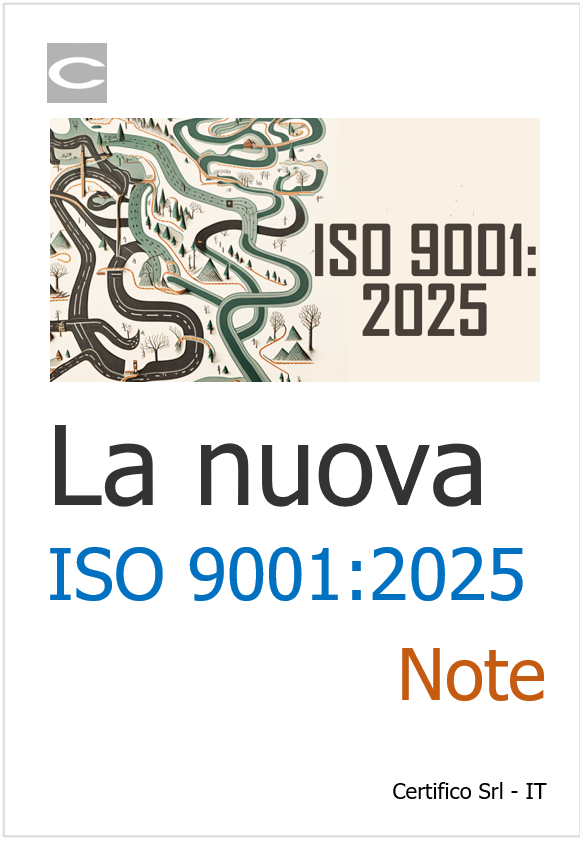Informazione tecnica HSE / 25 ° anno
/ Documenti disponibili:
45.549
/ Documenti scaricati: 34.408.444
/ Documenti scaricati: 34.408.444
ID 9304 | Update news 13.09.2023 / Documento allegato
Il progetto Ed. 1.0 è stato cancellato nel 2020.
Il presente documento è un estratto della norma tecnica ISO/DIS 21260:2018.
La norma analizza i casi in cui i contatti degli operatori con gli organi mobili o con macchine mobili non possono essere evitati (ad esempio: rulli di carico, macchine utensili, porte dell’ascensore) e definisce i valori per i limiti relativi il contatto, da considerare in fase di progettazione.
Lo scopo della norma è stabilire dei valori che possano essere usati per soddisfare il criterio di “progettazione intrinsecamente sicura” definita dalla norma tecnica EN ISO 12100:2010 (rif. 6.2.2.2). Inoltre, introduce il concetto di gruppi per tenere conto della complessità delle condizioni che si verificano quando le macchine e le persone operano insieme per consentire un equilibrio tra la frequenza di contatto, il possibile rischio e i benefici che derivano dall’uso della macchina.
EN ISO 12100:2010 6.2.2 Considerazione di fattori geometrici e aspetti fisici
Questi aspetti comprendono quanto segue:
a) limitazione della forza di attuazione a un livello sufficientemente basso in modo che la parte azionata non generi un pericolo di natura meccanica;
b) limitazione della massa e/o della velocità degli elementi mobili e pertanto della loro energia cinetica;
c) limitazione delle emissioni agendo sulle caratteristiche della sorgente […]
Nella norma vengono trattati solo gli effetti meccanici diretti sulla persona a seguito del contatto con parti in movimento della macchina. C’è però anche la possibilità di avere effetti secondari o indiretti sulla persona causati da:
- temperatura della parte di macchine con cui si ha il contatto;
- spinta consequenziale al contatto che potrebbe causare la caduta della persona (la norma ISO/DIS 21260:2018 analizza il caso nell’Allegato E);
- scosse elettriche.
La norma analizza solo il rischio “meccanico” diretto dovuto al contatto con l’organo o la macchina mobile.
ISO/DIS 21260:2018| Norma tecnica di tipo B
Comitato tecnico: ISO/TC 199
Excursus
___________
Methodology
If a type-C standard exists for the machine that includes contact limits, the limits specified by that type-C standard shall be used.
NOTE Type-C standards can specify limits directly or by reference to this document.
If there is no type-C standard or it does not include contact limits, the contact limits shall be determined using this document.
For a given machine a number of different human contacts may be possible. These may be by different moving parts of the machine or due to different modes of operation or other use conditions. To apply this document all possible contacts shall be taken into account.
For each contact the following steps (shown in Figure 1) shall be followed:
Figure 1 - Flowchart for application
__________
Classification of machine-human contact
General
The acceptability of a contact by a moving machine or parts of a machine varies depending upon the contact circumstances.
For practical purposes contacts have been divided into the following groups.
One classification group could define all of the contact situations but typically there are multiple classification groups.
In single contacts it is possible to also include dynamic (G1, G2 and G3), static (G4) and sliding (G5) elements all of which shall be taken into account.
Group 1 comprises dynamic contacts on the same individual more than once every hour, averaged over a period of eight hours.
Group 2 (G2) — Occasional contact
Group 2 comprises dynamic contacts on the same individual, less than once per hour averaged over a period of eight hours but more than once a week, or rare dynamic contacts, less than once per week, that the person being contacted does not expect.
Group 3 (G3) — Rare contact
Group 3 comprises dynamic contacts on the same individual less than once per week.
Group 4 (G4) — Static or quasi-static contact
Group 4 comprises any contact where the energy transfer rate is less than 2 J/s or where the contact force is applied for more than 500 ms.
Group 5 (G5) — Sliding contact
Group 5 comprises any contact that includes sliding directly on the surface of the skin.
___________
Contact thresholds
General
The following paragraphs specify the threshold values for each of the previously defined contact groups.
NOTE Current limit values are based on size, energy, force and pressure. Future research is permitted to suggest alternative units for limiting thresholds, e.g. momentum [kg ∙ m/s].
Threshold values — Group 1, group 2 and group 3 contacts
For a dynamic contact to be acceptable the conditions given in Table 1 shall apply.

Table 1 - Dynamic threshold values
Where contact frequency exceeds once per minute the following additional requirements apply:
- a protective barrier in the form of protective clothing or similar shall be used at the contact location to prevent localized skin damage; or
- for direct skin contact the acceptable conditions are reduced by 50 %.

ID 22522 | 08.09.2024 / Download Scheda
Lo standard ISO 9001, come previsto per gli altri standards, ad intervalli di tempo più o meno regolari (o...

ID 13491 | Update news 05.06.2024 / Documento di approfondimento allegato
Il 3 maggio 2021, Luana D’Orazio, 22 anni, perdeva la vita in seguito ad un infortunio sul...
della Commissione del 6 novembre 2017 volta a mantenere nella Gazzetta ufficiale dell'Unione europea il riferimento della norma armonizzata EN 12285-2:2005 sui serbatoi di acc...
Testata editoriale iscritta al n. 22/2024 del registro periodici della cancelleria del Tribunale di Perugia in data 19.11.2024